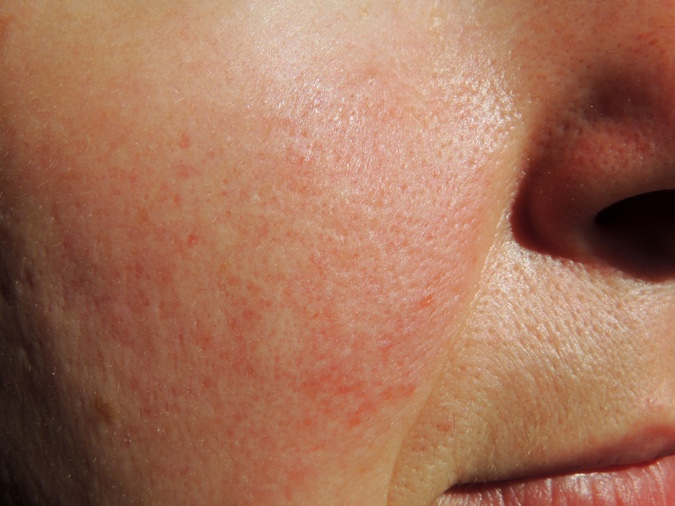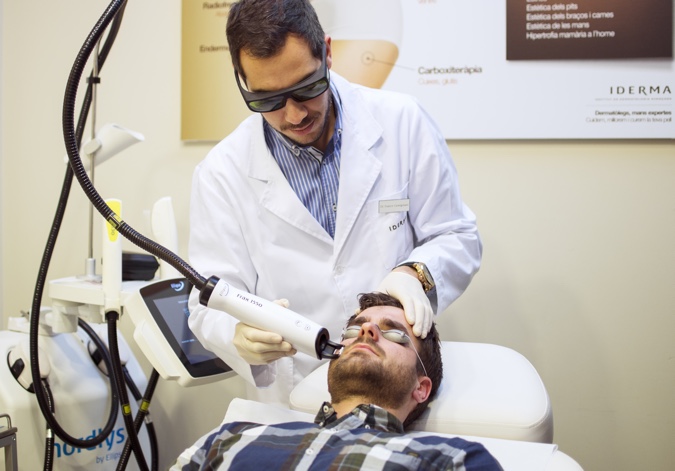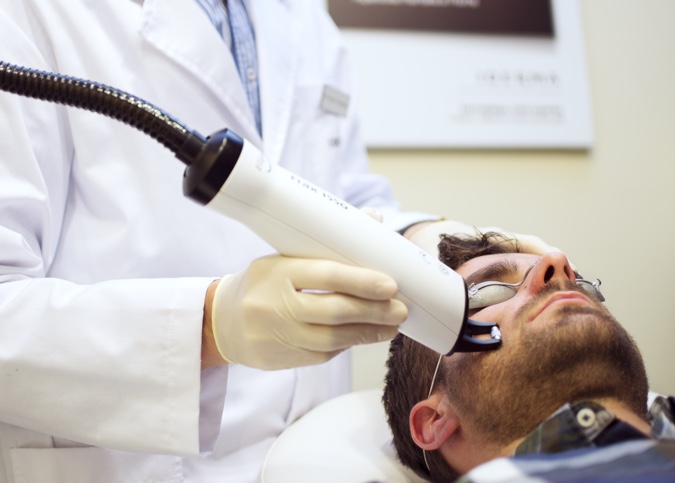Unidad de Acné
En IDERMA somos especialistas en el tratamiento avanzado del acné juvenil, el acné adulto y el acné rosácea, así como de sus cicatrices.
El acné es posiblemente la enfermedad que más frecuentemente nos encontramos en la consulta. Además de causar una importante afectación estética, con las implicaciones que esto conlleva a nivel de autoestima, esta patología puede provocar secuelas permanentes. Por ello, el acné debe tratarse desde el primer momento.
En IDERMA no solo somos especialistas en el tratamiento del acné juvenil, sino también del acné adulto y la rosácea. Asimismo, contamos con la soluciones más avanzadas para el tratamiento de las cicatrices del acné.
Acné juvenil
Aproximadamente un 80% de los jóvenes entre los 12 y los 24 años va a sufrir acné en un grado más leve, moderado o grave.
La buena noticia es que se trata de una enfermedad que, tratada adecuadmente, se cura en más del 90% de los casos. E incluso en el porcentaje de pacientes con un acné resistente, este mejora muy significativamente.
Además, actualmente disponemos de una amplísima gama de tratamientos tanto para el acné como para sus cicatrices.
El acné juvenil se trata de una patología que se da principalmente como consecuencia de la hiperproducción de andrógenos, las hormonas sexuales masculinas, que tiene lugar durante la adolescencia, aunque el acné responde a diferentes causas y tiene un condicionante genético muy importante.
Es fundamental que el acné juvenil pueda tratarse desde el primer momento para que no empeore y, sobre todo, para evitar sus secuelas (cicatrices del acné). En ese sentido, muchas veces los pacientes acuden a la consulta del dermatólogo después de meses o años de no tratar el acné o de hacerlo inadecuadamente y esto solo agrava la patología.
Además, no hay que olvidar que el acné tiene una afectación estética importante y puede afectar significativamente a los jóvenes a nivel psicológico.
En IDERMA somos dermatólogos especialistas en acné juvenil, ofreciendo tratamientos altamente efectivos.
Acné adulto hormonal
El acné puede aparecer una vez superados los veinte y prolongarse hasta los 35 o 40 años. En la edad adulta, sin embargo, se trata de una patología mayoritariamente femenina. De hecho, la prevalencia del acné en adultos es de aproximadamente un 3% en los hombres, y un 12% en las mujeres. Esta diferencia de afectación entre sexos se da por las particularidades de la constitución hormonal femenina.
El acné tardío suele manifestarse con lesiones en el mentón y alrededor de la boca de forma predominante, con escasos comedones o miniquistes y numerosas lesiones inflamatorias más o menos profundas. Se exacerban los días previos a la menstruación, y dejan, cuando evolucionan, manchas o cicatrices.
Las causas del acné en la edad adulta no se conocen del todo. No obstante, se sabe que influye una mayor secreción de sebo en pacientes que presentan acné persistente (la continuación del acné de la adolescencia). Además, pueden influir factores externos.
A pesar de que pueda tratarse de un acné leve o moderado, las cicatrices del acné, predominantemente a nivel facial, pueden afectar enormemente la autoestima de las personas afectadas y mermar su calidad de vida.
En IDERMA, como dermatólogos especialistas en acné, insistimos en la importancia de unos cuidados adecuados que ayuden a controlorar el acné o a curarlo y, sobre todo, para evitar futuras cicatrices.
Acné adulto cosmético
En ocasiones, el acné adulto es consecuencia del uso de cosméticos inadecuados. Por este motivo es tan importante que un especialsita pueda hacer un diagnóstico del estado de la piel y prescribir aquellos cosméticos más adecuados según las diferentes necesidades.
Acné rosácea
La rosácea, también llamada acné rosácea, es un trastorno crónico del folículo pilosebáceo muy frecuente (su prevalencia se calcula entre el 2 y el 10% de la población).
Es más habitual en personas de piel clara y en mujeres de mediana edad. Asimismo, alrededor de un tercio de los pacientes tienen antecedentes familiares de la misma enfermedad cutánea, lo que podría estar en relación a una cierta predisposición genética.
La rosácea se caracteriza fundamentalmente por una hipersensibilidad facial (piel muy sensible e intolerante al uso de cosméticos), brotes de enrojecimiento y aparición de 'granitos' o 'espinillas' en la zona centrofacial. Otros síntomas pueden incluir la sensación de quemazón o escozor, y la presencia de hinchazón y/o resequedad facial.

La rosácea es una enfermedad con escaso impacto en la salud física del individuo. Sin embargo, puede producir una gran afectación psicológica y del autoestima, por lo que puede afectar la calidad de vida.
Como medidas generales, el paciente debe entender que se trata de una enfermedad crónica que cursa en forma de brotes en relación a ciertos estímulos.
Los pacientes con rosácea presentan una piel hipersensible y con frecuencia presentan intolerancia a múltiples cosméticos. Afortunadamente existen diversas gamas de productos cosméticos para pieles intolerantes y reactivas. Muchos de ellos son cosméticos específicos para pieles con rosácea y combinan agentes emolientes, anticongestivos (para disminuir la rojez) y filtros solares.
Es importante determinar qué subtipo de rosácea presenta el paciente para asesorar sobre el tratamiento específico más adecuado para cada caso. Entre ellos, fármacos como antibióticos, isotretinoína, láser de PDL, luz pulsada intensa (IPL), electrocoagulación o láser de CO2. as de no quedar embarazadas mientras tomen este tratamiento porque puede producir malformaciones en el feto.
Cicatrices del acné
Una de las secuelas más preocupantes del acné es la aparición de las antiestéticas cicatrices atróficas.
Estas se producen por una pérdida de fibras de colágeno, elastina y ácido hialurónico, lo que genera una pérdida de volumen en esas zonas. Debido a esto, nuestro objetivo terapéutico será estimular la producción de estas sustancias en la piel y, en ciertos casos, reponerlas.
Por su parte, aquellas cicatrices más deprimidas son causadas por bandas de fibrosis que tiran de la superficie de la piel hacia planos más profundos.
Entre los tratamientos para las cicatrices del acné más utilizados, destacan el láser fraccionado no ablativo (LFNA), el láser fraccionado ablativo (LFA), los peelings químicos, la infiltración de materiales de relleno, la subcisión o la exéresis quirúrgica mediante punch.


| CONCERTAR VISITA |

